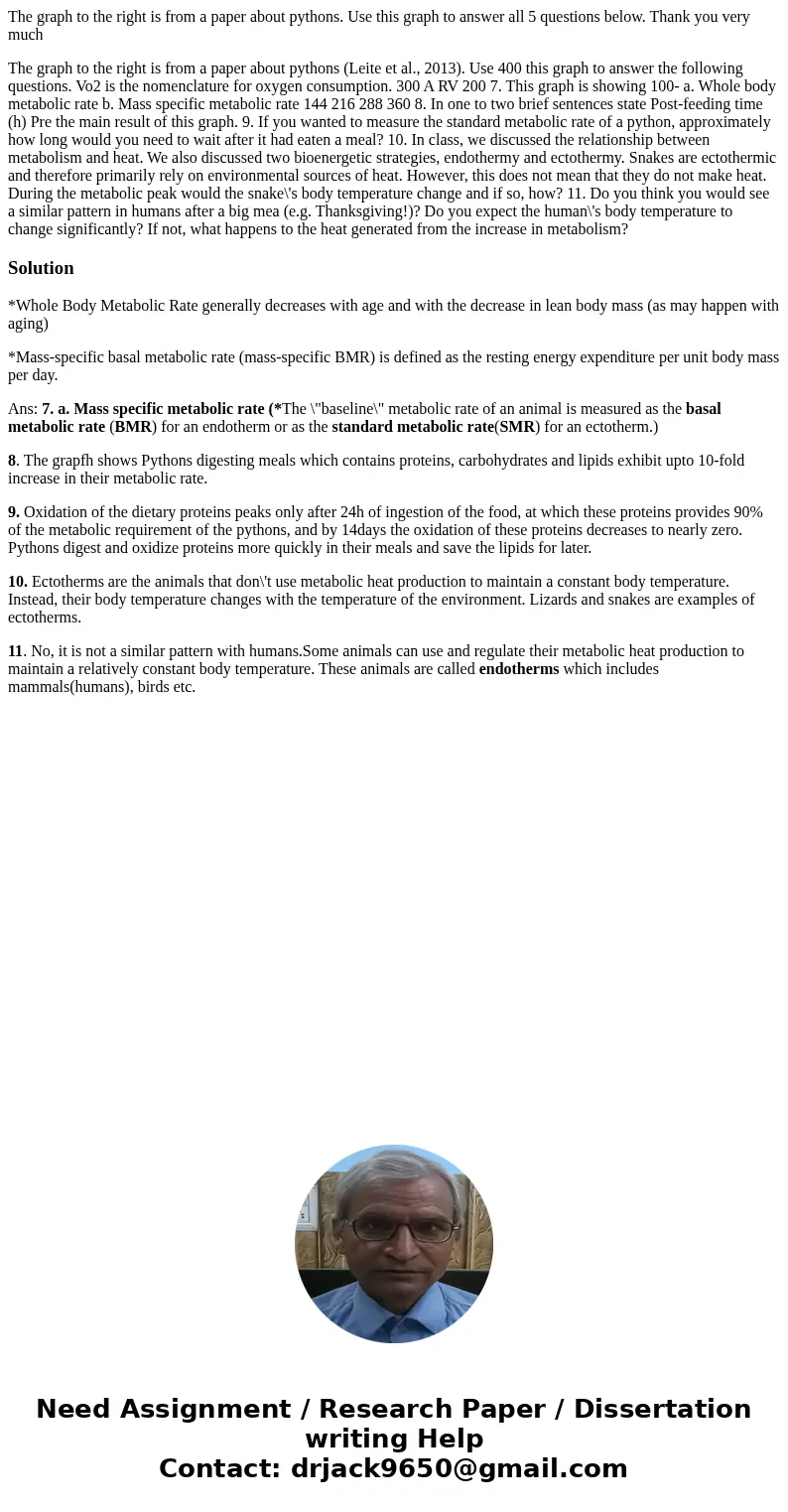The graph to the right is from a paper about pythons Use thi
The graph to the right is from a paper about pythons. Use this graph to answer all 5 questions below. Thank you very much
The graph to the right is from a paper about pythons (Leite et al., 2013). Use 400 this graph to answer the following questions. Vo2 is the nomenclature for oxygen consumption. 300 A RV 200 7. This graph is showing 100- a. Whole body metabolic rate b. Mass specific metabolic rate 144 216 288 360 8. In one to two brief sentences state Post-feeding time (h) Pre the main result of this graph. 9. If you wanted to measure the standard metabolic rate of a python, approximately how long would you need to wait after it had eaten a meal? 10. In class, we discussed the relationship between metabolism and heat. We also discussed two bioenergetic strategies, endothermy and ectothermy. Snakes are ectothermic and therefore primarily rely on environmental sources of heat. However, this does not mean that they do not make heat. During the metabolic peak would the snake\'s body temperature change and if so, how? 11. Do you think you would see a similar pattern in humans after a big mea (e.g. Thanksgiving!)? Do you expect the human\'s body temperature to change significantly? If not, what happens to the heat generated from the increase in metabolism?Solution
*Whole Body Metabolic Rate generally decreases with age and with the decrease in lean body mass (as may happen with aging)
*Mass-specific basal metabolic rate (mass-specific BMR) is defined as the resting energy expenditure per unit body mass per day.
Ans: 7. a. Mass specific metabolic rate (*The \"baseline\" metabolic rate of an animal is measured as the basal metabolic rate (BMR) for an endotherm or as the standard metabolic rate(SMR) for an ectotherm.)
8. The grapfh shows Pythons digesting meals which contains proteins, carbohydrates and lipids exhibit upto 10-fold increase in their metabolic rate.
9. Oxidation of the dietary proteins peaks only after 24h of ingestion of the food, at which these proteins provides 90% of the metabolic requirement of the pythons, and by 14days the oxidation of these proteins decreases to nearly zero. Pythons digest and oxidize proteins more quickly in their meals and save the lipids for later.
10. Ectotherms are the animals that don\'t use metabolic heat production to maintain a constant body temperature. Instead, their body temperature changes with the temperature of the environment. Lizards and snakes are examples of ectotherms.
11. No, it is not a similar pattern with humans.Some animals can use and regulate their metabolic heat production to maintain a relatively constant body temperature. These animals are called endotherms which includes mammals(humans), birds etc.

 Homework Sourse
Homework Sourse